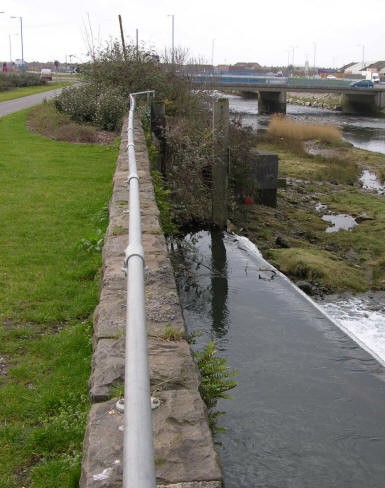Port Talbot Docks - impounding and sluicing

Whenever a ship is locked in or out of the dock, water is lost as the sluices are opened to drop the lock water to the level of the open sea. The height of the tide determines how much water is lost, and this water has to be replaced. When the docks were constructed at Port Talbot, the engineers built two feeders to maintain the dock water level - one from the River Afan and one from the River Ffrwdwyllt. Also, to cater for prolonged spells of dry weather when the flow of water coming down these rivers would be very much reduced, a pumping station was installed to pump seawater into the dock. Pumping could be carried out three hours before and three hours after high water.
The main water source was the River Afan, where the Green Park Weir was constructed to divert water from the river through a feeder channel and into the dock. The weir was fitted with sluice gates, and there was also a sluice at the end of the catchment wall into the river at a much lower level. The flow of water into the dock could be controlled by operating the sluices on the weir, and the feeder could also be flushed out by closing the weir sluices and opening the sluice into the river at low tide. The backflow of water from the dock would scour the feeder channel, thus getting rid of all the silt and debris which had built up over a period of time. The sluices on the weir were removed years ago, possibly when the steelworks installed a pumping station to abstract water from the dock feeder. The sluice into the river can still be seen but all the mechanism has long since gone.





Sluicing at Port Talbot
Each month during low water on spring tides the lock sluices were opened for a period of half an hour, reducing the level of water in the dock by 12 to 18 inches over an area of 123 acres. The millions of gallons of water released into the channel had a scouring effect, and washed out to sea a quantity of sand and silt which would otherwise have occupied the continuous use of a bucket dredger for up to seven weeks.

